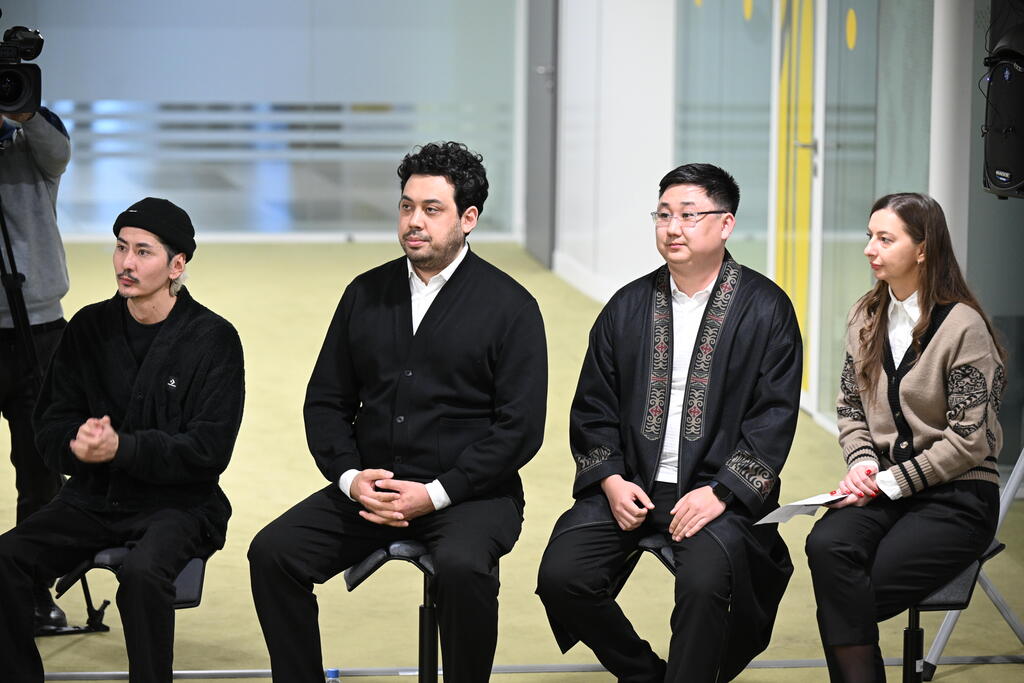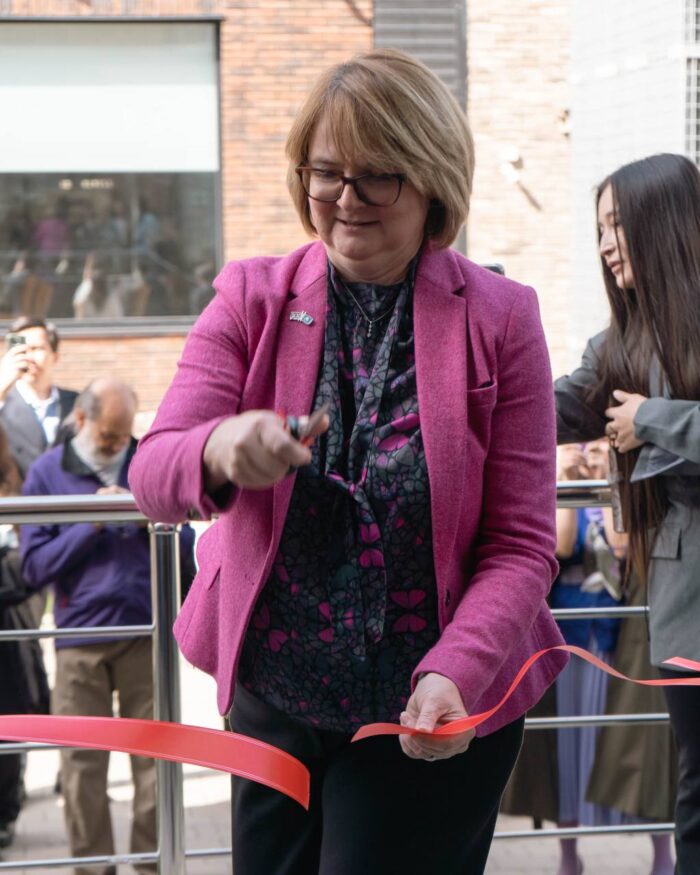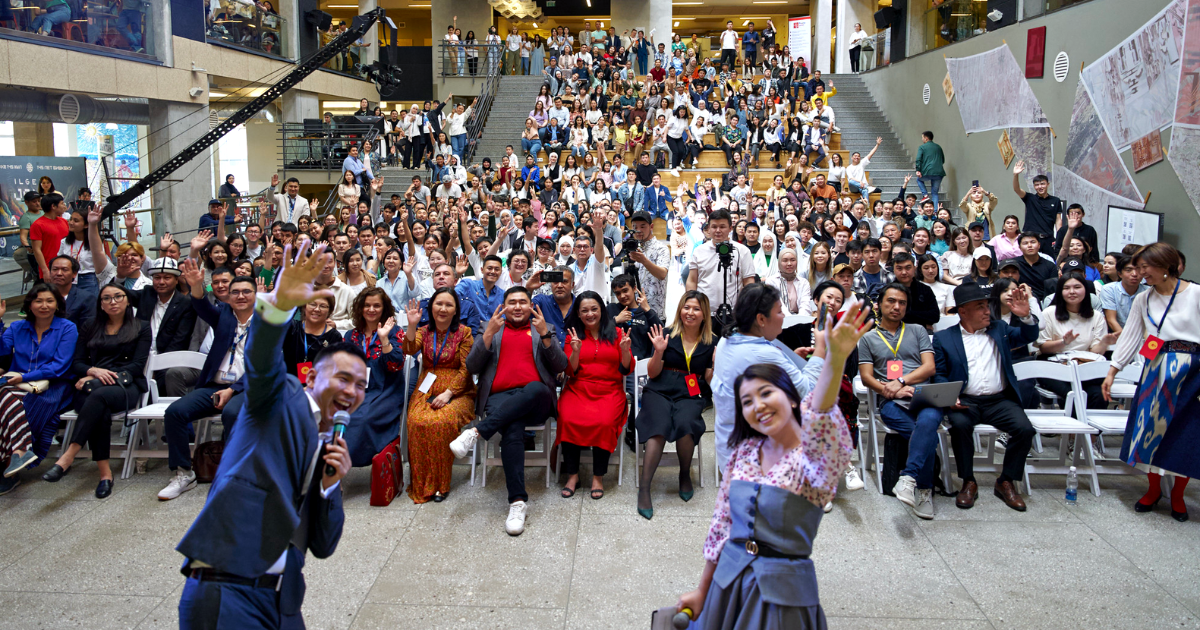ASTANA – Kazakhstan continues to improve the legal environment for the development of the creative economy. For Central Asia, developing favorable conditions for creative talents is an opportunity to strengthen the collective regional identity based on shared cultural values and common aspirations.

The two-day Digital Bridge 2023 forum in Astana. Photo credit: digitalbusiness.kz.
In recent years, the meaning of creative industries has expanded from a traditional understanding of visual arts to a range of economic activities, which are now the source for developing an inclusive economy.
Kazakhstan’s agenda on creative industries development
In his Sept. 1 state-of-the-nation address, President of Kazakhstan Kassym-Jomart Tokayev advocated for the creative economy’s expansive growth, setting a task for the government to enhance the legal framework and improve conditions for its development.

The Dec. 6. meeting of the Senate’s club of young experts analyzing the legal environment and prospects for developing creative industries. Photo credit: senate.parlam.kz.
The creative economy, the head of state said, is “fueling the growth of large cities that become magnets for talented, creative individuals.” Tokayev noted that the sector remains underdeveloped in Kazakhstan.
The creative industry’s contribution to the country’s gross domestic product (GDP) is less than 1%. Its share in employment is even lower. Despite the statistics, there is a raft of examples of Kazakh citizens achieving global recognition for their talents.
Data from the Kazakh Ministry of National Economy indicates that 95,000 people are employed in the creative industries. Investments in fixed assets reach 33.3 billion tenge ($69.3 million).

British Ambassador Kathy Leach cuts the ribbon during the opening ceremony of the creative hub at the De Montfort University. Photo credit DMUK.
The legal environment is crucial for the creative economy’s development. Step by step, Kazakhstan continues to create conditions for creative talents.
In June, the Kazakh Ministry of Tourism and Sports (the former Kazakh Ministry of Culture and Sports) presented a list of 43 creative activities, including cinema, animation, contemporary art, jewelry, IT and game development, television programs, photography, architecture and fashion, music, and cultural heritage.
The country pursues its cultural policy under the concept of creative industries development for 2021-2025. It was adopted to generate employment in technological and venture entrepreneurship with a focus on the younger generation.
Last year, the amendments to the law on culture and the entrepreneurial code introduced the terms of creative activity and creative industries. As a result, creative industries are now considered part of the country’s private business sector, which requires state support.
Experts suggest that the state should ensure art spaces are not temporary, but permanent, and maintained together with the creators. It is imperative to build a constructive dialogue between deputies, representatives of state institutions, the creative industry, and expert communities.
Parliamentarians are now working on amendments to the law on culture and copyright and related rights. Interested parties are welcome to join the legislative work of the Senate, an upper chamber of the Kazakh Parliament. It was announced by Senate Speaker Maulen Ashimbayev during the meeting of the Senate’s Club of Young Experts on Dec. 7.
Specialists plan to shift the attention from large cities and work with local talents to unlock the potential in the regions. The government plans to establish a creative industry center in each region.
Citizens put forward their own ideas as well. As a case in point, the Dom 36 creative hub in Almaty serves as a space for lectures, exhibitions, festivals, pitch sessions, and charitable events. The art space plans to launch a creative camp internship program and a creative caravan, facilitating workshops, festivals, and events in mono-cities and regional centers.
Digitalization has a great impact on Kazakhstan’s fast-paced creative environment. Creators are now much more involved in digital activities, developing respective projects. During the Digital Bridge annual international technology forum in October, tech specialists agreed on the need to educate artificial intelligence (AI) and to implement safety measures with respect for the creators.

The backyard of Dom 36 in Almaty. The building used to be a garage prior to renovation. Photo credit: sxodim.com.
The creative IT community is expanding not only in Astana and Almaty but also in Karagandy, the city of mine workers.
The Terricon Valley project, which was initiated by the city’s residents, provides space for the development of tech startups, collaboration, educational training, and creative events. The IT hub has been transformed into a rapidly expanding networking platform for digital creators, planning to attract 10,000 professionals in the next five years.
The United Kingdom, the birthplace of the creative economy, is leading in terms of GDP. According to the U.K. Department for Culture, Media and Sport (DCMS), the creative industries sector brought £109 billion (US$132 billion) to the country’s economy in 2021.
The U.K. is also keen to share its creative industry expertise with Kazakhstan. The recently launched creative hub at De Montfort University is one of the examples of how it helps Kazakhstan in this effort. As part of the opening ceremony, Ambassador Kathy Leach commended the nation’s creative ambitions and offered the British Council’s expertise in helping Kazakhstan expand its creative landscape. In 2018, the British Council created the first-ever map of сreative industries in Kazakhstan.
Central Asia’s new frontiers in creative industries
The United Nations Educational, Scientific and Cultural Organization (UNESCO) Almaty Cluster Office conducted the mapping of educational platforms that support creative entrepreneurs and creative industries experts in Kazakhstan, Kyrgyzstan, Tajikistan, and Uzbekistan.

The opening of the Park of creative industries in Bishkek. Photo credit: economist.kg.
The research stated that Kazakhstan has the most widely available information on creative venues.
These, for example, include the Batyrkhan Shukenov Foundation for Young Musicians, the Eurasian Cultural Alliance Public Association on Contemporary Art, the MOST Business Incubator for the entrepreneurial ecosystem development, Nazarbayev University Research and Innovation System (NURIS) among other educational platforms.
In Central Asia, attention to the creative industries development is paid by the governments of the Kyrgyz Republic and Uzbekistan.
The Park of Creative Industries is a unique initiative of the Kyrgyz Republic and an important milestone in its economic development. It was launched in June.
The idea was proposed by the Ololo company, the Kyrgyz network of creative hubs.

Uzbek President Shavkat Mirziyoyev and French President Emmanuel Macron during the opening of the exhibition on Uzbekistan’s treasures in the Louvre Museum. Photo credit: uzreport.news.
The park represents a special tax regime for legal entities from 20 creative sectors that receive 90% of profits. Residents of the park are provided with opportunities to expand globally. Foreign citizens will also be able to become residents of the park in the long run.
Its list of creators includes more than 15 types of creative activities: architecture, landscape design, interior design, fine arts, media art, music, cinema, video production, graphic design, handicraft, fashion industry and others.
In Uzbekistan, the population under 30 is approximately 60%. The Uzbekistan – 2030 strategy, particularly aimed at reforming the youth policy, provides for the creation of a creative park in each region of the country. The first is planned to be opened in Tashkent.
In November last year, Uzbek President Shavkat Mirziyoyev and French President Emmanuel Macron opened the first Central Asian exhibition in the Louvre Museum in Paris. It encompasses nearly 180 works – manuscript paintings, architectural traces, and monumental fragments from the Uzbek cities of Samarkand and Bukhara.
People in Central Asia have historically led a nomadic way of life. The shared concept of nomadism is being popularized now not only in tourism but in contemporary art.
In an interview with The Astana Times, Irina Kharitonova, the research expert on cultural and creative industries in Central Asia, the Commonwealth of Independent States (CIS), and Europe, explained nomadism in modern interpretation and the inextricable interconnection between art and tourism.


